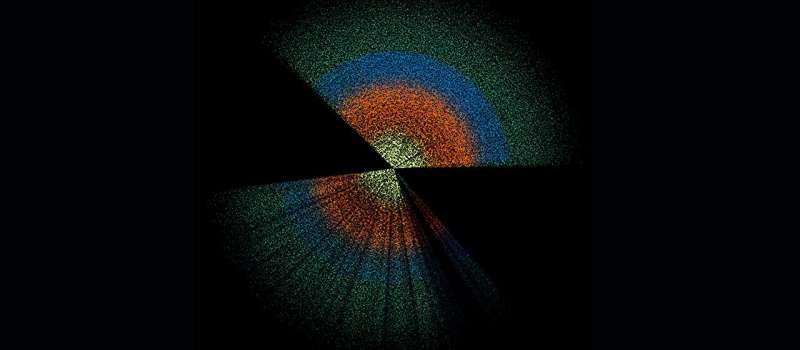A recent study led by researchers from the University of Geneva (UNIGE) suggests that dark matter behaves similarly to ordinary matter, particularly in its interaction with gravity. Published on March 15, 2025, in Nature Communications, the findings challenge previous assumptions about dark matter and its fundamental characteristics.
Dark matter, an invisible and hypothetical component of the universe, does not emit or reflect light, making it elusive to study. With the aim of understanding whether this mysterious substance adheres to the same physical laws as ordinary matter, the research team investigated its behavior on a cosmological scale. Their work indicates that dark matter falls into gravitational wells created by massive celestial bodies in a manner akin to ordinary matter.
Research Methodology and Findings
The research team, led by Camille Bonvin, an associate professor in the Department of Theoretical Physics at UNIGE, compared the velocities of galaxies, which are predominantly composed of dark matter, with the depth of gravitational wells. Bonvin explained, “If dark matter is not subject to a fifth force, then galaxies will fall into these wells like ordinary matter, governed solely by gravity.”
The study utilized established physical laws, including Einstein’s theory of general relativity and Euler’s equations, to evaluate galaxy motion. By examining current cosmological data, the researchers concluded that dark matter appears to operate under the same principles as ordinary matter.
While the findings support the notion that dark matter adheres to familiar gravitational laws, they do not entirely rule out the possibility of a fifth, unknown force influencing dark matter. According to Nastassia Grimm, the study’s first author and former postdoctoral researcher at UNIGE, “If such a fifth force exists, it cannot exceed 7% of the strength of gravity; otherwise, it would have been evident in our analyses.”
Future Implications and Research Directions
These initial findings mark a significant advancement in the ongoing quest to understand the nature of dark matter. The next challenge for the scientific community is to determine whether a fifth force exists and, if so, how it affects dark matter behavior. Isaac Tutusaus, a researcher at ICE-CSIC and IEEC, noted that upcoming experiments, such as the Legacy Survey of Space and Time (LSST) and the Dark Energy Spectroscopic Instrument (DESI), will be capable of detecting forces as weak as 2% of gravity, which may provide further insights into dark matter’s properties.
As researchers continue to explore the complexities of the universe, the understanding of dark matter remains a critical element in unraveling the mysteries of cosmology. The implications of this research extend beyond theoretical physics, potentially impacting our understanding of the universe’s formation and evolution.
The study enhances the ongoing discourse surrounding dark matter, emphasizing the need for continued exploration and investigation into this fundamental aspect of our universe. Further research will undoubtedly contribute to a deeper understanding of not only dark matter but also the underlying laws that govern all matter in the cosmos.







